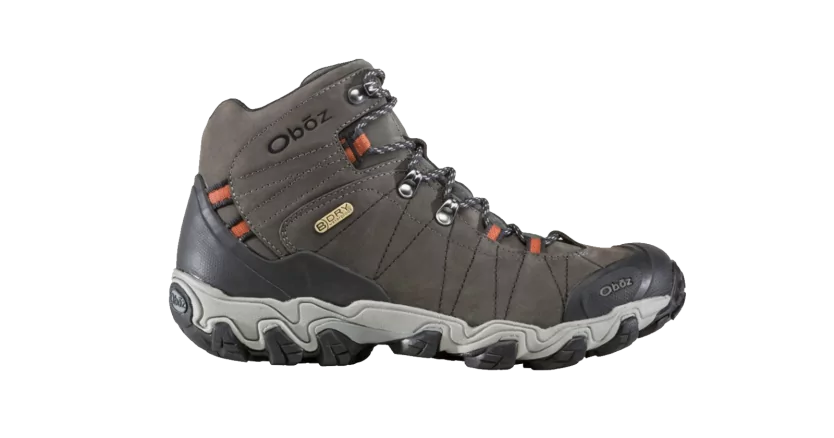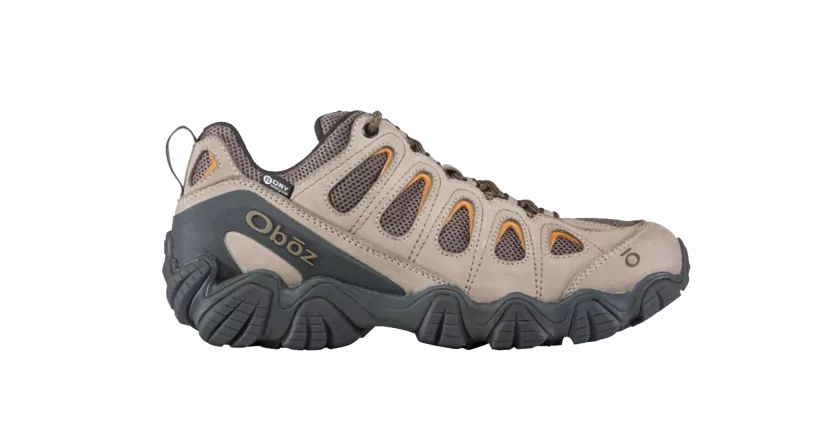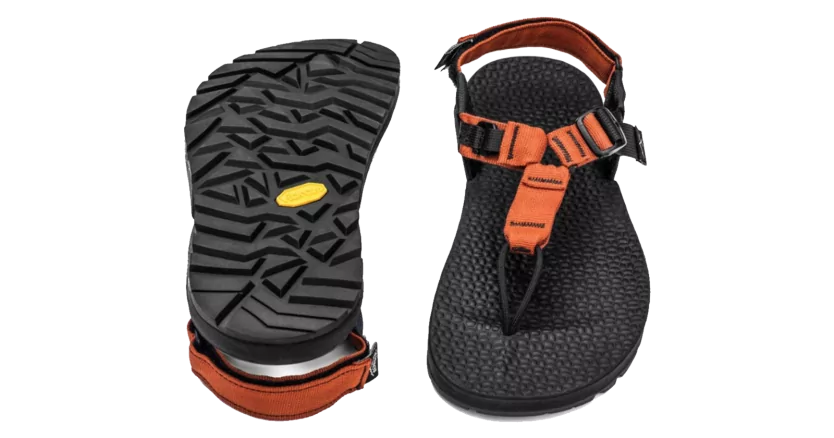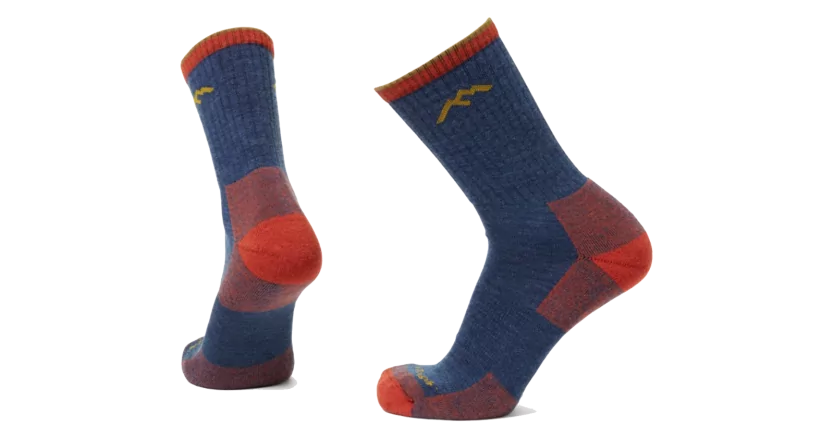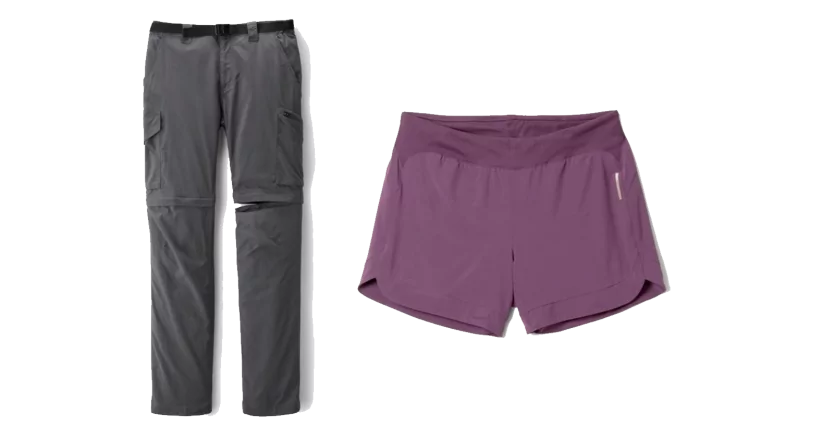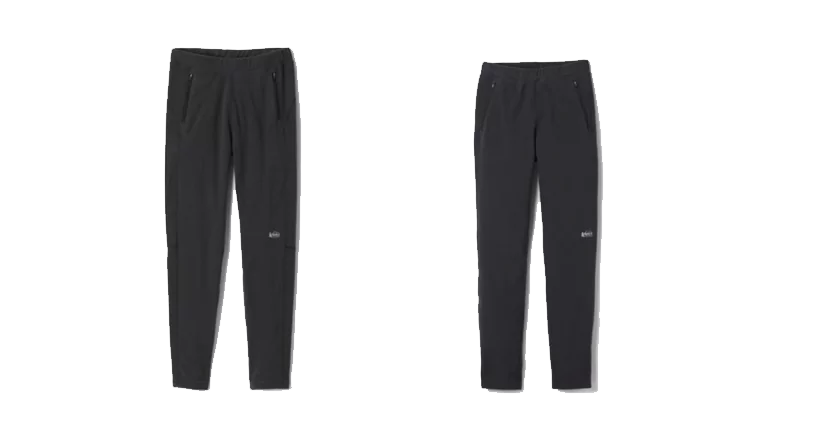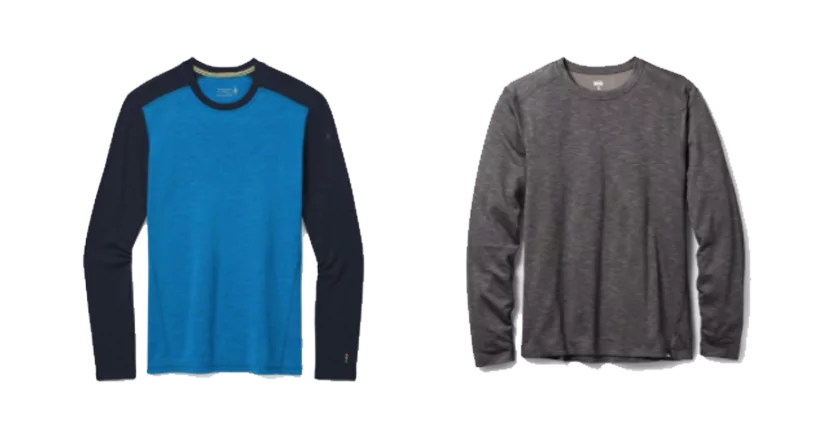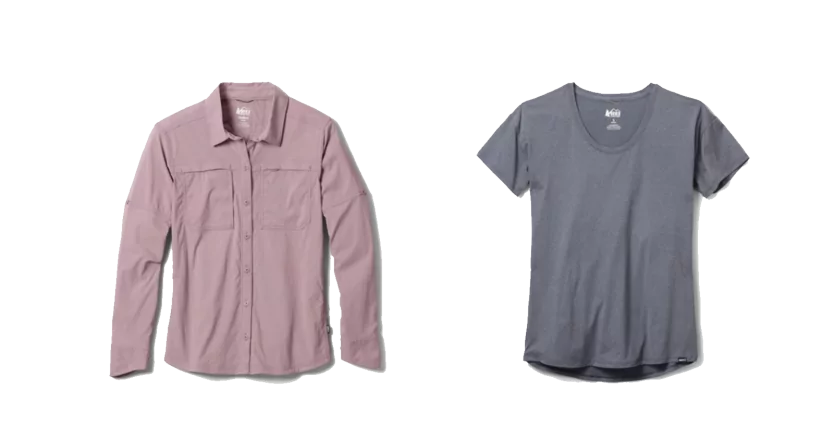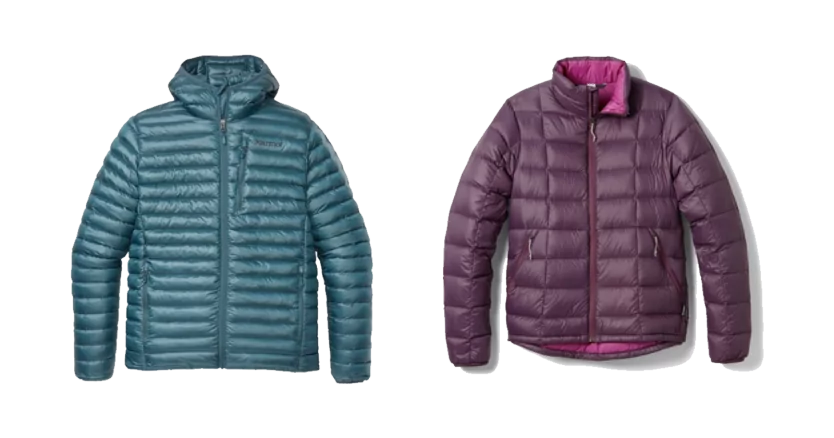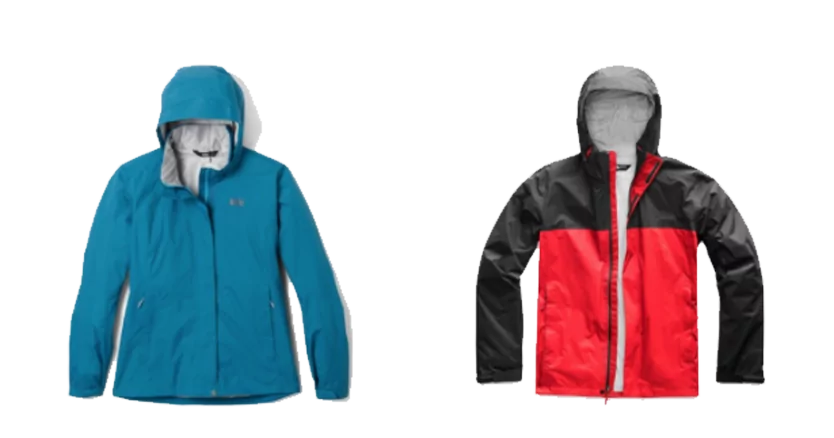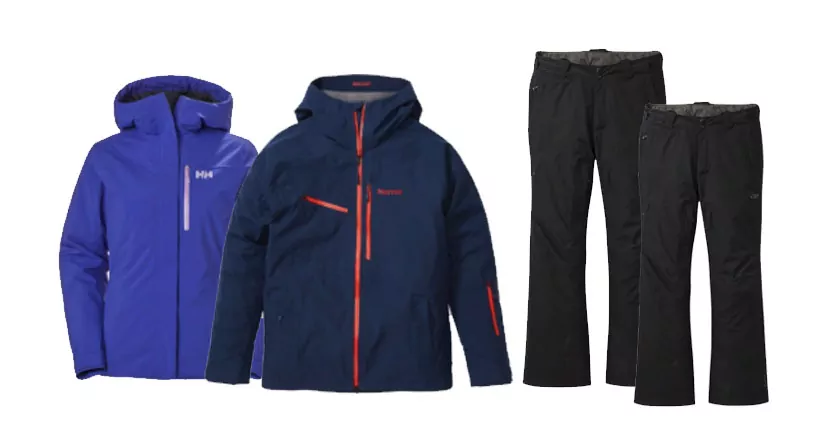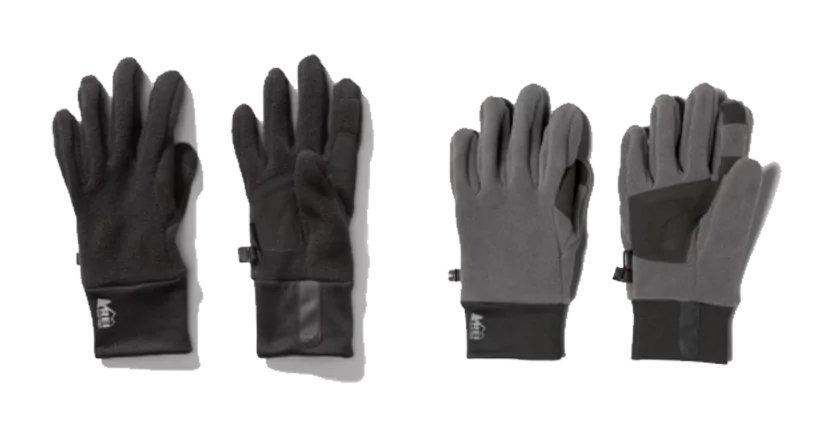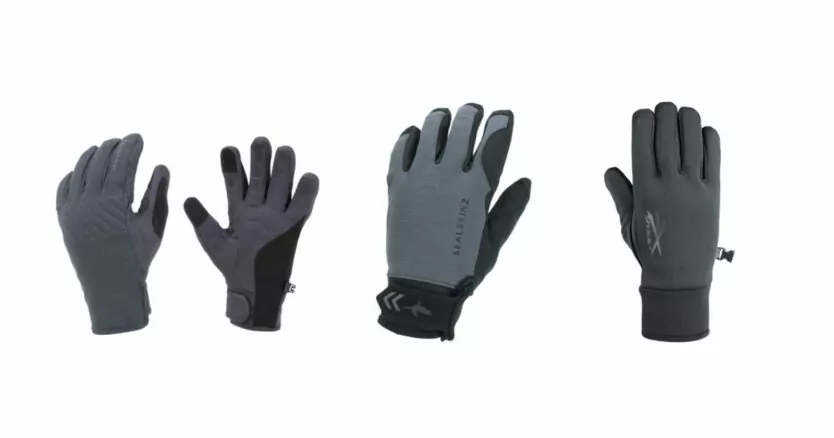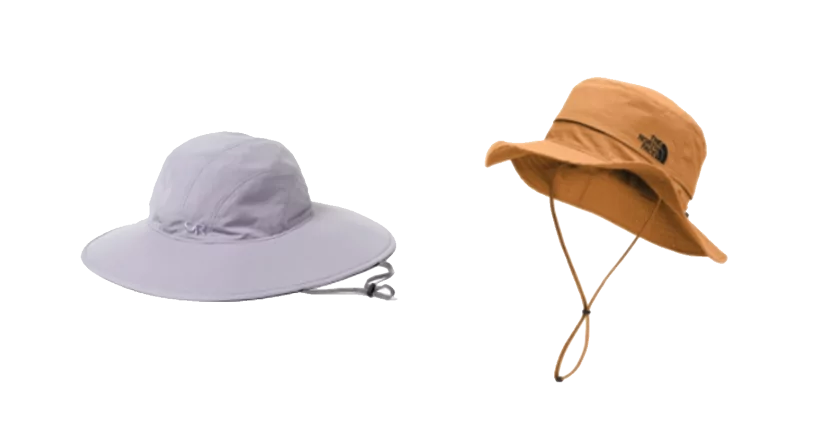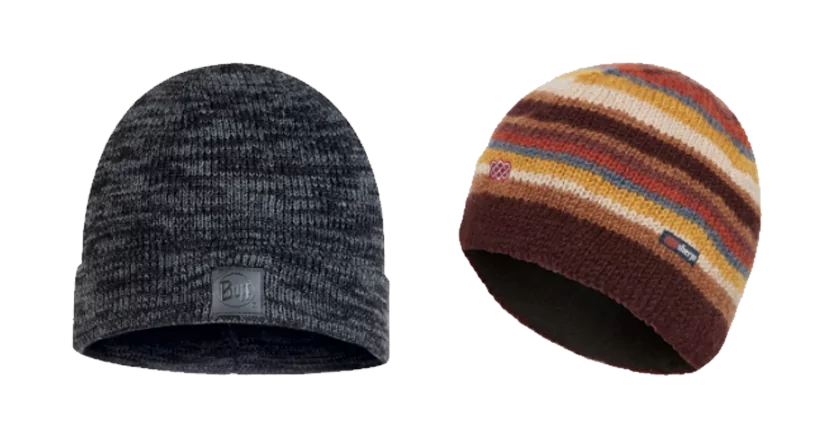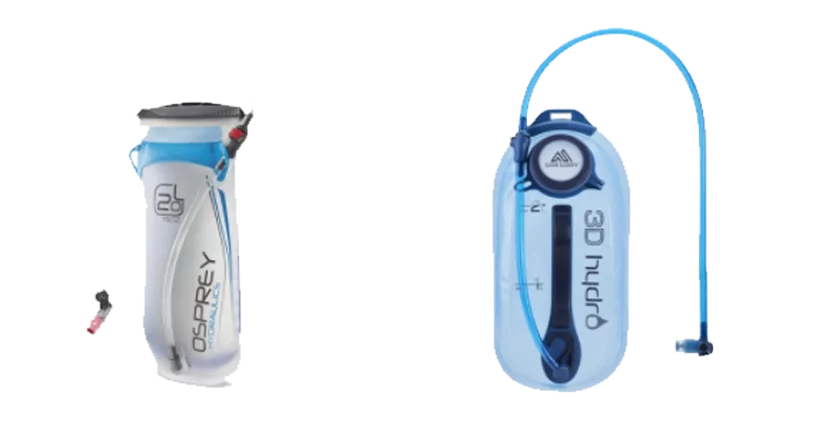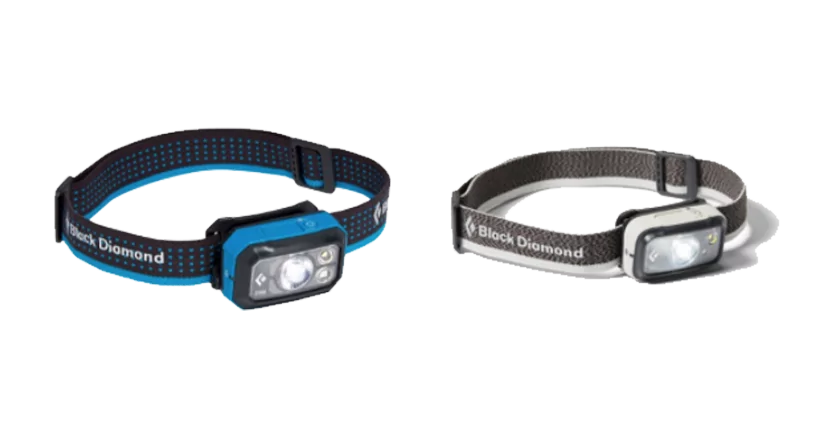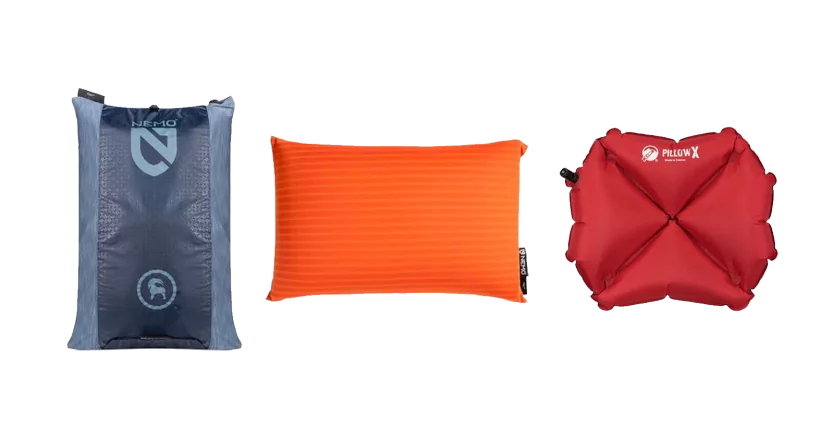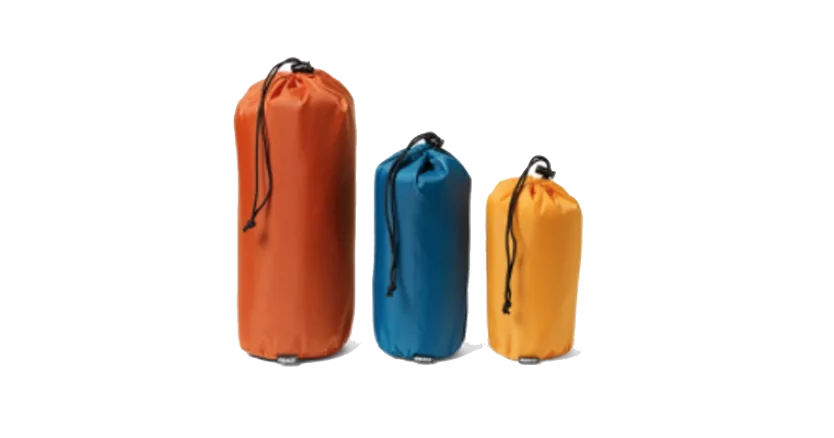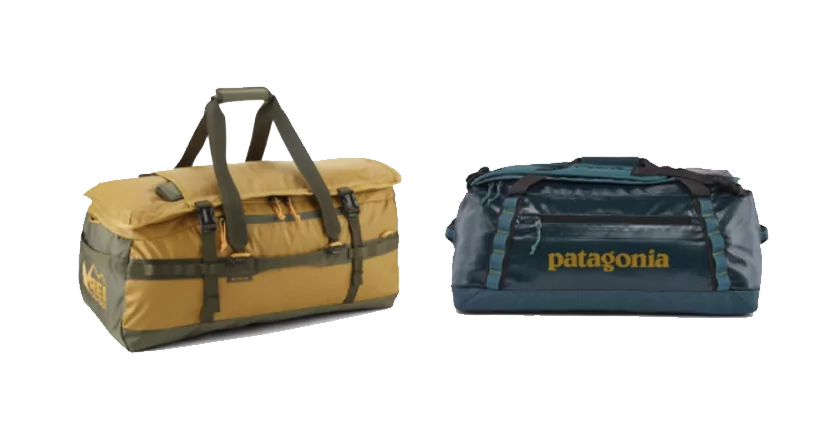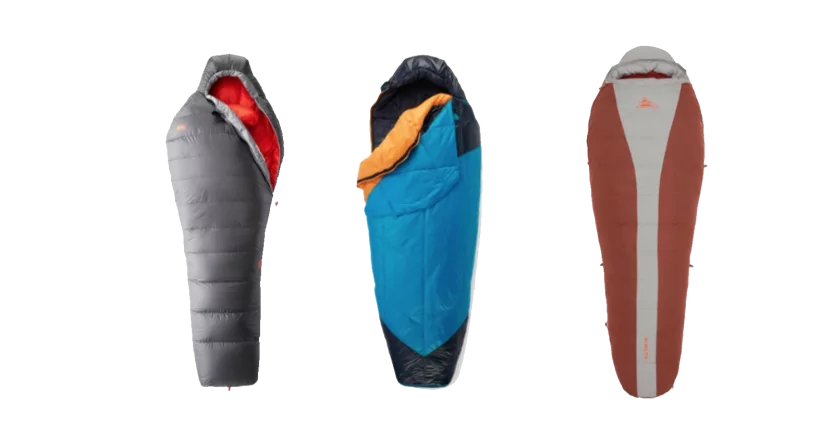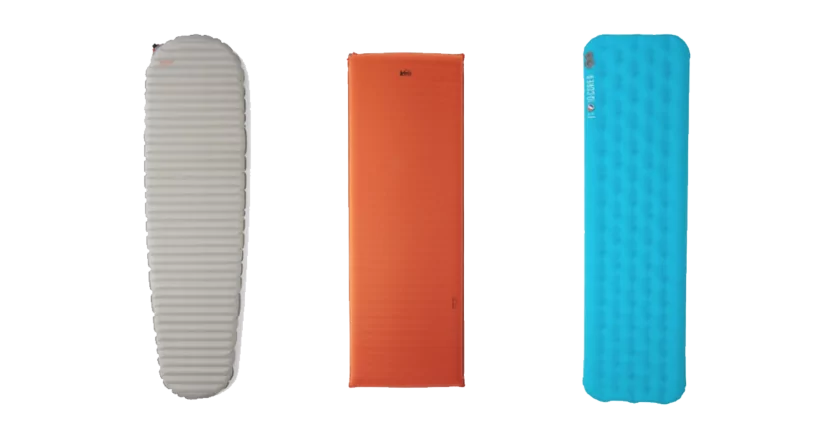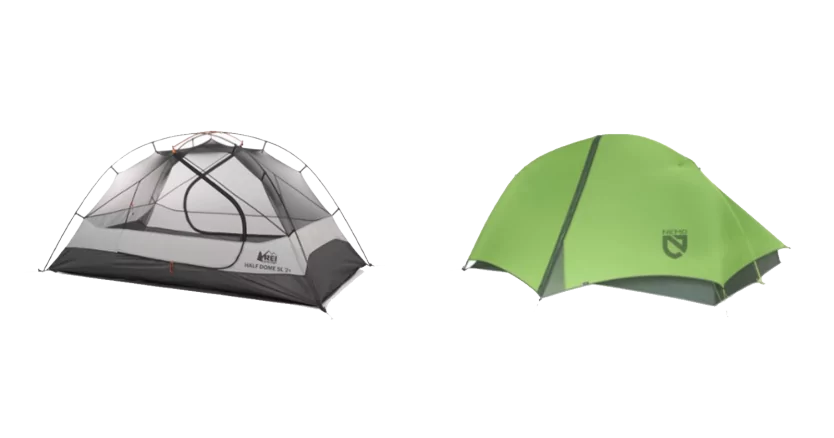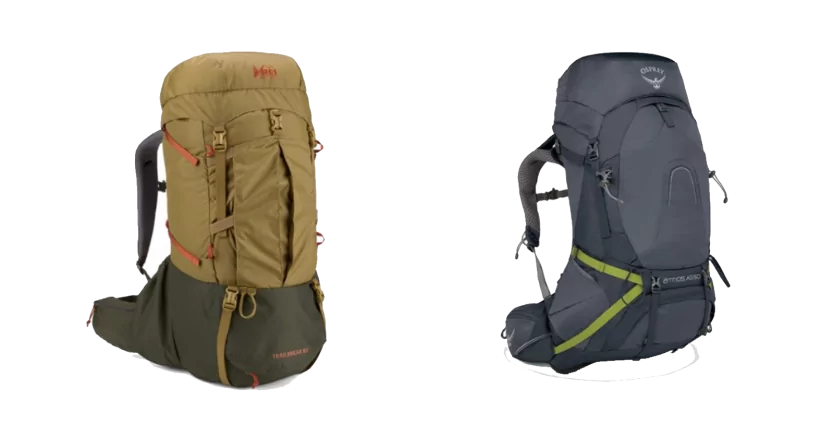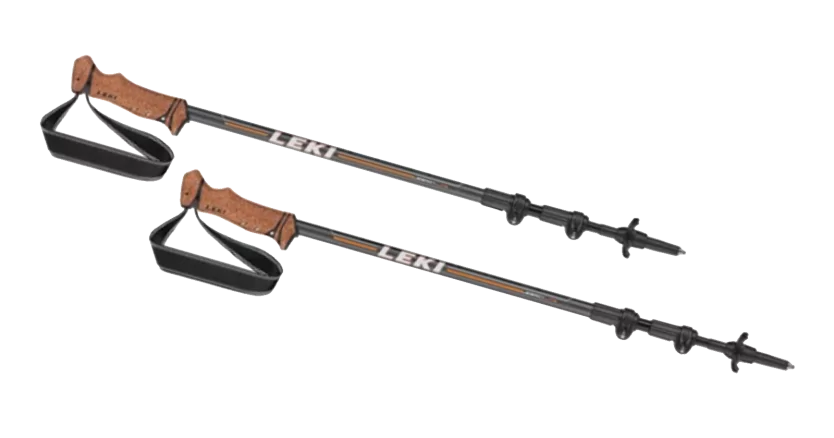Packing Quick Links
Use our quick links to find the right gear and clothing for your next Wildland Trekking trip!
We invite you to use our gear and clothing quick links below to easily find the right supplies for your next Wildland Trekking trip. The items are categorized to help you easily find our recommendations. Please refer to the packing list in the information packet for your specific trip to know which items will be necessary on your adventure.
*Disclosure: the links below are affiliate links. At no cost to you, we earn a small commission on any products purchased through these links. Proceeds go to supporting our operations and sustainability and conservation missions. These affiliate links do not influence the products we recommend.

Footwear
![]() Hiking Boots
Hiking Boots
Synopsis
We recommend sturdy hiking boots or shoes on all Wildland trips. Hiking boots are a good option on all backpacking trips and on any trip for guests who want or need additional ankle, knee, hip or back support. For some trips we specifically recommend boots vs. shoes, which you will see in the packing list. On most trips, however, low top hiking shoes (detailed below) are also a good option.
Benefits of Boots Vs. Shoes
- Increased support for entire lower body
- Less chance of lower leg injuries
- Keep feet drier in rain, snow, mud or boggy conditions
Drawbacks of Boots Vs. Shoes
- Heavier weight on your feet means harder work hiking, especially uphill
- Higher cost than hiking shoes
- Often less breathable so moisture can build up internally causing blisters
- Less flexible which can increase blisters
What to Look for in Boots
- Above the ankle support
- Light to mid weight boots
- Lug soles
Wildland Gear Guide Boot Recommendations
See Boots on Backcountry.com
See Boots on REI.com
![]() Hiking Shoes
Hiking Shoes
Synopsis
If your ankles, knees, hips and back are strong then a low top hiking shoe is a good option for most trips, which include backpacking trips, llama treks, inn-based and camping-based tours, day hikes…etc. Packing lists for some trips specifically recommend ankle-high boots, and in those cases we advise sticking to that recommendation.
Benefits of Hiking Shoes Vs. Boots
- Decreased weight on your feet means easier walking, especially uphill
- Less expensive than boots
- Often more breathable, which can translate to less internal moisture and fewer blisters
- Less rigid, which also often translates to fewer blisters
Drawbacks of Hiking Shoes Vs. Boots
- Less support for your ankles, knees, hips and back
- Higher chance of lower leg injuries
- More likely to get wet or get debris in your shoes
What to Look for in Hiking Shoes
- Mid weight to heavy weight hiking shoes
- Lug soles
- DO NOT buy street running shoes (trail runners are ok if they have lug soles)
Wildland Gear Guide Hiking Shoe Recommendations
See Hiking Shoes on Backcountry.com
Mens Hiking shoes Womens hiking shoes
See Hiking Shoes on REI.com
![]() Camp/Water Shoes
Camp/Water Shoes
Synopsis
In many of our backcountry trips’ packing lists we recommend bringing a pair of shoes for use in camp and/or during river crossings. Ideally, these will be lightweight, quick drying, protective shoes. (If you’re on an inn-based or basecamp tour, any sort of comfortable, casual shoe will work as alternative footwear to your hiking shoes or boots.) The two major categories of options for camp/water shoes are closed toe (toe is covered by the shoe) and open toe (toe is exposed). In general, closed toe shoes offer more protection and are a safer option.
What to Look for in Camp/Water Shoes
- Lightweight
- Quick drying
- Toe protection
- Sturdy sole
See Water shoes/Sandals on Backcountry.com
Mens Shoes/Sandals Womens Shoes/Sandals
See Water Shoes/Sandals on REI.com
![]() Hiking Socks
Hiking Socks
Synopsis
Your socks are one of the most important items to get right. The best, and most simple advice is to not pack cotton socks. Cotton absorbs moisture and is very slow to dry, which means your feet will get very moist, your skin will get soft like the skin of a peach, and you’re likely to be ravaged by blisters. It’s very worth it to purchase high quality socks made specifically for hiking and backpacking. The two main categories of material are wool and synthetic, and often socks will be a combination.
What to Look for in Hiking Socks
- No cotton!
- Wool, synthetic or wool-synthetic blend
- High or low is fine, but should extend at least 2-3 inches above your shoes or boots
- Mid weight (for winter trips upgrade to heavy weight)
See Hiking Socks on Backcountry.com
Mens Hiking SOCKS Womens hiking SOCKS
See Hiking Socks on REI.com
Clothing
![]() Hiking Shorts and Pants
Hiking Shorts and Pants
Synopsis
In the packing list in your trip packet we will specify how many pairs of shorts and/or pants to bring on your trip. Most Wildland Trekking packing lists recommend a combination of pants and shorts, and you can always bring zip-offs (convertibles) as an alternative to provide more versatility.
What to Look for in Shorts and Pants
- Avoid cotton shorts and pants
- Look for synthetic fabrics: polyester, nylon, lycra or a combination
- Zip-offs (convertibles): pants cuffs should expand to be pulled over boots or shoes
See Pants on REI.com
See Shorts on REI.com
![]() Fleece Pants
Fleece Pants
Synopsis
For trips that will occur in colder environments (winter desert trips and many mountain trips year round), we recommend having fleece pants. This layer provides extra warmth in the cold, and a dry, warm layer to wear in camp or while sleeping. They are light, packable, quick drying and versatile.
What to Look for in Fleece pants
- Mid weight
- No cotton
See Fleece Pants on Backcountry.com
See Shorts on REI.com
![]() Base Layers (Long Underwear)
Base Layers (Long Underwear)
Synopsis
Your base layers (aka “long underwear”) are critical pieces of clothing, particularly in the mountains or in the desert in the winter. They fulfill the very important function of keeping your skin dry and warm. An effective base layer will wick moisture (i.e. sweat) away from your skin and toward your outer layers. It will also provide insulation.
There are two fabrics we recommend for base layers, wool (Merino) or synthetic (polyester, lycra…etc.)
Benefits of Wool Base Layers
- Excellent wicking
- Moderately quick drying
- Resistant to odor causing bacteria
- Natural fibers
Benefits of Synthetic Base Layers
- Excellent wicking
- Very quick drying
- Less expensive and more durable than wool
Wildland Gear Guide Base Layer Recommendations
See Base Layers on Backcountry.com
See Base Layers on REI.com
![]() Hiking Shirts
Hiking Shirts
Synopsis
We include hiking shirts as a recommended item on most trips, but as always remember to check your trip packet and follow the list closely. Hiking shirts have a variety of functions including protection from the sun (some are PDF rated), protection from bugs (some are infused with repellent), moisture wicking, quick drying, venting and insulating.
Again, please follow the specific guidance in your packing list to determine which type of hiking shirt is needed on your trip. The links below will show you a wide variety of quality hiking shirts.
See Hiking Shirts on Backcountry.com
See Hiking Shirts on REI.com
![]() Mid Layers ("Puffies")
Mid Layers ("Puffies")
Synopsis
Your mid layer’s job is insulation. You should be able to hike in it if needed, or it’s a quick layer to throw on in the mornings or evenings. The three main options are heavy fleece jackets, down-fill jackets, and synthetic-fill jackets.
Fleece Jackets
- Insulate when wet
- Quick drying
- Affordable
- Heavy and bulky
Down-fill jackets
- Light and packable
- Durable and long lasting
- Superior insulation
- Don’t insulate when wet
- Slow drying
synthetic-fill Jackets
- Light and packable
- Quick drying
- Insulate when wet
- Less durable over time
Wildland Gear Guide Mid Layer Recommendations
See Mid Layers on Backcountry.com
See Mid Layers on REI.com
![]() Rain Gear
Rain Gear
Synopsis
We recommend having rain gear on every trip we offer. Some packing lists may only include a rain jacket, but many require rain jackets and pants. Rain gear is also windproof and doubles as wind layers, especially in the mountains.
What to Look for in Rain Gear
- Waterproof
- Breathable
Wildland Gear Guide Rain Jacket Recommendations
Wildland Gear Guide Rain Pants Recommendations
See Rain Jackets on Backcountry.com
See Rain Jackets on REI.com
See Rain Pants on Backcountry.com
See Rain Pants on REI.com
![]() Snow Jackets & Pants
Snow Jackets & Pants
Synopsis
Winter trips, ski and snowshoe trips and some mountain trips have snow jackets and/or pants as recommended packing list items. Rain jackets and pants can substitute for snow gear, but it’s important to bring extra base and mid layers to compensate for the thinner rain-oriented garments. Also, rain gear tends to be less durable than snow gear, so on ski and snowshoe trips actual snow gear is best.
What to Look for in Snow Gear
- Waterproof
- Breathable
- Hood
- Insulated (fleece or down/synthetic fill)
If you have trouble finding “snow jackets and pants,” try searching for/looking for ski jackets and pants.
Please follow the specific guidance in your packing list to determine which type of outer layers are needed on your trip. The links below will show you a wide variety of quality snow jackets and pants.
See Snow Jackets on Backcountry.com
See Snow Pants on Backcountry.com
See Snow Jackets on REI.com
See Snow Pants on REI.com
![]() Fleece Gloves
Fleece Gloves
Synopsis
Fleece gloves weigh very little and are wonderful when you need them. If they are on your packing list, it’s very important to have them. Some times they will be referred to as a “liner glove” or “fleece liner.”
What to Look for in ITEM
- Mid weight to heavy weight fleece
See Fleece Gloves on Backcountry.com
See Fleece Gloves on REI.com
![]() Waterproof Hiking Gloves
Waterproof Hiking Gloves
Synopsis
For some areas (like Patagonia) we have waterproof gloves on the packing list. These are not ski gloves. They are light weight, waterproof gloves that make hiking with trekking poles in cold, wet weather much more tolerable.
What to Look for in ITEM
- Light to mid weight, waterproof
See waterproof Gloves on REI.com
Headwear
![]() Sun Hats
Sun Hats
Gear
![]() Hydration Systems
Hydration Systems
Synopsis
In general, we require at least 2 liters of water capacity on mountain trips and at least 3 liters capacity on desert and canyon trips. The system we recommend is a combination of a hydration reservoir (2-3 liters capacity) and a water bottle (at least 1 liter capacity). Hydration reservoirs enable more efficient water consumption because you can drink while hiking, and the water bottle provides redundancy in case the reservoir fails.
See Hydration Systems on Backcountry.com
Water Bottles Hydration Reservoirs
See Hydration Systems on REI.com
![]() Headlamps
Headlamps
Synopsis
Headlamps have become a must-have item on backcountry hiking, backpacking and camping trips. They allow the user to do many important things at night, such as hiking hands-free, setting up a tent, organizing items inside the tent, reading, eating, navigating to the use the bathroom…etc.
What to Look for in Headlamps
- LED bulbs
- Use of AA or AAA batteries
- Soft, flexible head strap
See Headlamps on Backcountry.com
See Headlamps on REI.com
![]() Camp Pillows
Camp Pillows
Synopsis
On most backpacking, portered and llama trips we recommend bringing a camp pillow. It’s important that your pillow be very light, small and inflatable. We recommend avoiding the synthetic-fill camp pillows, which are very bulky and take up too much room in your backpack. If you’d rather not purchase a camp pillow, a popular alternative is to use your clothes in a stuff sack as a pillow.
What to Look for in Camp Pillows
- Very light and packable
- Inflatable
See Camp Pillows on Backcountry.com
See Camp PIllows on REI.com
![]() Stuff Sacks
Stuff Sacks
Synopsis
Many of our trips – especially llama treks and portered trips – have stuff sacks on the packing list. However, even if they are not in the list, they can be very useful. A good stuff sack is light, durable and often waterproof. They help to organize your clothing and personal items, and protect them from the elements with a very slight increase in weight.
What to Look for in ITEM
- Variety of sizes
- Durability (ripstop material)
- Waterproof
- Compression sacks are great for clothing or sleeping bags
See Stuff Sacks on Backcountry.com
See Stuff Sacks on REI.com
![]() Waterproof Travel Duffels
Waterproof Travel Duffels
Synopsis
Some of our trips require a waterproof travel duffel bag. These bags will hold personal items and extra clothing, and may be transported during the trip by livestock, vehicles or porters. On some trips your duffel may be stored at a hotel and contain clothing and items for post-trek activities.
What to Look for in ITEM
- Durability (ripstop material)
- Waterproof
- Ability to lock is a plus
See Duffels on Backcountry.com
See Duffels on REI.com
Included Gear (Optional to Bring Your Own)
![]() Sleeping Bags
Sleeping Bags
Synopsis
We provide sleeping bags on all of our backpacking and camping-based trips. However, many guests choose to bring their own. Our bags are professionally laundered after every trip, and for this reason we can only use synthetic-fill bags (repeated washings degrade down-fill bags). Synthetic-fill bags are hypoallergenic and insulate when wet, but are heavier and bulkier than down bags. The advantage to bringing your own sleeping bag (if it’s down) are less weight and more space in your pack. Read more about bringing your own sleeping bag.
BENEFITS OF DOWN BAGS
- Less weight
- Less bulk
- More durable (long life if well taken care of)
Drawbacks of Down Bags
- Do not insulate when wet
- Cannot launder often
- More expensive
Choosing the Right Temperature
In your trip packet we specify the temperature range of sleeping bag you’ll need if you bring your own. Within the specified range, cold sleepers should choose warmer (lower temperature) bags, and warm sleeper should choose cooler (higher temperature) bags.
Choosing the Right Length
Most sleeping bags come in Regular and Long options. For men, if you’re taller than 6’0; or for women, if you’re taller than 5’6 then you will usually want a “long” bag. However, it’s important to follow the guidance of specs of the sleeping bag you’re considering to decide on the right length.
See Down Sleeping Bags on Backcountry.com
See Sleeping Bags on REI.com
![]() Sleeping Pads
Sleeping Pads
Synopsis
A good sleeping pad can mean the difference between a night of suffering and a restful night of sleep. A quality pad will do two very key things: insulate you from the cold coming up from the ground, provide a comfortable surface on which to sleep so you can’t feel rocks and irregularities.
What to Look for in a sleeping pad
- Inflatable
- Insulating
- Light (less than 1.5 lbs)
- Packable
- Long and wide enough
See Sleeping pads on Backcountry.com
See Sleeping Pads on REI.com
![]() Backpacking Tents
Backpacking Tents
Synopsis
Choosing the right backpacking tent can be a complex endeavor. It’s a bit too much to cover on this page, but good news! We have a gear guide page dedicated to selecting the right backpacking tent and our recommendations for current great choices.
Wildland Gear Guide Tent Recommendations
See Backpacking Tents on Backcountry.com
See Backpacking Tents on REI.com
![]() Multi-day Backpacks
Multi-day Backpacks
Synopsis
For many outdoor guides their favorite backpack is like part of the family. Choosing the right backpack is a question of size, capacity, fit, comfort, special features, durability and weight. The best way to select a pack is to go into your local outdoor store and try some on. However, we realize that not everyone is going to do that so we’re offering some input here on how to find the right pack for your Wildland Trekking adventure if you’d like to bring your own and won’t be able to visit a store in person.
Backpack Size
Backpacks come in a variety of sizes. Each company has a sizing chart, and we recommend referring to this when selecting a backpack, but we’ve provided some guidance of our own below.
It’s crucial that your multi-day backpack fits correctly. There are two components to a good fit: a) the size of the hip belt and b) the length of the suspension system. If the hip belt is sized too large, the load will not ride correctly on your hips, which is where most of the weight should be. You should have little to no wait on your shoulders. Every backpack has an adjustable hip belt, but some are even more customizable with different size belts that can be used on the same pack.
The suspension system and shoulder harness sizes are based on the length of your torso, not your height. Someone can be tall with a shorter torso, or vice versa. Sizing varies by brand, so it’s critical that you measure your torso to achieve the right fit. To measure your torso, use a flexible tape measure to determine the distance from your C7 vertebrae (the most noticeable vertebrae at the base of your neck) to your iliac crest (an imaginary horizontal line connecting the tops of your hip bones). Most people fall between 16 and 23 inches. Take this measurement and, referencing the sizing chart of the backpack manufacturer, determine which size backpack will fit you best.
Backpack Capacity
- 3-4 Days = 60-75 liters (3660-4575 cubic inches)
- 5-7 Days = 75-85 liters (4575-5185 cubic inches)
Recommended Brands
- Osprey
- Deuter
- Gregory
- Kelty
- REI
See Backpacks on Backcountry.com
See Backpacks on REI.com
![]() Daypacks
Daypacks
Synopsis
On all of our inn-based and basecamp tours, hut to hut treks, llama treks and portered treks guests hike with daypacks. Daypack sizes can range from just enough room to fit water, an extra layer and some snacks to enough space to fit clothing and food for a multi-day trip where you don’t need camping gear. Our recommendations are below.
Recommended Sizes
- Inn-based and Basecamp Tours = 18-25 liters (1100-1800 cubic inches)
- Hut to Hut, Llama and Portered Treks = 25-35 liters (1500-2100 cubic inches)
What to Look For in a Day Pack
- Solid, adjustable hip belt that can carry most of the weight
- Sternum strap
- Pocket for a hydration reservoir
See DayPacks on Backcountry.com
See DayPacks on REI.com
![]() Trekking Poles
Trekking Poles
Synopsis
Trekking poles have become standard gear on backpacking trips and hiking vacations, and for good reason. They make a tremendous difference in terms of balance, back support, knee support and all-body exercise.
RECOMMENDED BRANDS
- Leki
- Black Diamond
Order from Leki for a 20% Discount!
See Trekking Poles on Backcountry.com
See Trekking Poles on REI.com
MORE GEAR RECOMMENDATIONS
Check out our Wildland Gear Guide for more recommendations about hiking, trekking, camping and outdoor gear. We are always adding new products to help our guests and readers make the best choices to outfit their adventures.




